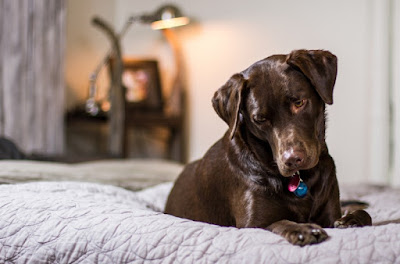Dogs are not used to social exclusion. They like to spend time with their human family. In this article you will learn about tips to help separation anxiety with your dog. If he leaves his dog alone, he can get in trouble. If you stay alone for a long time, you can see the results of your destructive behavior. Chewing, digging and urinating at home are common signs of anxiety associated with the dog's separation.
The owners must be very patient with unwanted dog behavior. It may take some time for problems to resolve. Do not fret and start yelling at your dog because it will only scare you, it will not make you correct the behavior.
Get your dog used to spending time alone. You can do this by leaving it alone for 10 to 15 minutes. After getting used to spending so little time alone, he spends an hour or two watching how he does it. I hope that sooner or later you will be able to spend an entire shift without showing any signs of worry about the dog's breakup.
Another great way to minimize dog anxiety is to spend time with you before you leave. Play with him or give him a mood to calm him down. Take it to help, will help too. When you return, you are probably tired and want to rest for a while, which helps you stay distracted for a while.
However, some dogs do not respond to any of these measures. If you can afford it, you may need a babysitting service to make your pet feel comfortable. You will be surprised to discover that there are dog nurseries that are the ideal solution to your problem.
Make sure that your dog does not show signs of separation anxiety if he has an underlying health problem. Instead of urinating at home, there may be a risk of incontinence, kidney problems or a simple urinary tract infection. The first thing to do should be to consult your veterinarian.
Of course, it is possible that your dog is simply bored while you're away, causing signs of dog-dread. Do your best to keep your dog busy. Let it play with a lot of toys. Mental puzzles are also useful for stimulation, especially those that offer treatment once the puzzle is solved.
Do you have problems surviving your dog at work or on a trip alone? Because you know that the situation will be very complicated on your return. Your house will probably end informally, your pots and garden plants will be ruined and sometimes cracks will appear on the windows.
How do I train a dog with separation anxiety? The roles for you as owner of the dog would be:
1. Act Stoical: Exclude drama as "HELLO, SUGAR, MOTHER'S HOUSE!" On departure or arrival at the house. These actions only increase the fear of your dog.
2. Your dog's belly: give your dog a hobby in your absence, such as "hiding" or, even better, an agreement with your neighbor to lend your dog to you in order to keep it. Dog company during your absence.
3. Ignore your dog's lack of attention: give him chew toys instead of always watching for your dog's discomfort. The goal is to focus your attention on something emotionally detachable. Give him the attention he deserves when he shows signs of independence.
4. Recognize the object that triggers the alarm: your dog may get nervous when he puts on his shoes or the keys ring. Practice it spontaneously, even if you do not teach your dog to be immune to these items.
5. Finally, it is convenient to extend your absence: these basic tips are intended primarily for dogs with mild symptoms of separation anxiety. Serious anxiety in dogs can cause a dog to injure themselves by chewing on their body parts or hitting the glass in front of the main entrance of the house.
Visit my blog, where you'll find this lesson on separation anxiety your dog. You'll see some examples of things you can do today, right now, to teach this potentially life-saving skill to your dog.
References:
https://getfreedogtraining.com/solutions-for-separation-anxiety-in-dogs/
https://www.freedogtrainingclasses.com/separation-anxiety-issue-in-dogs/


















